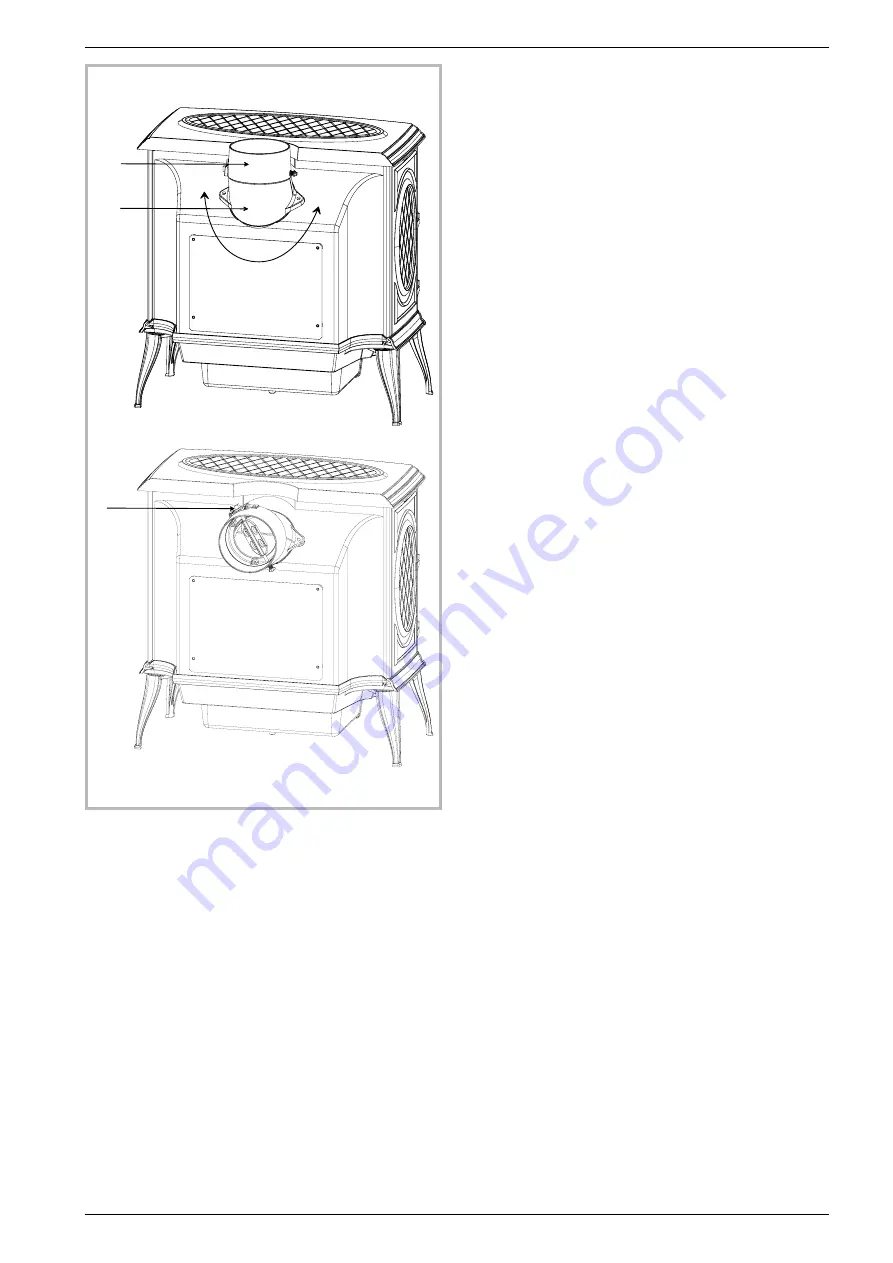
The hearth must protrude at least 300 mm in front of the
stove and 150 mm each side.
If the hearth is constructed on timber, there must be a
clearance of at least 250 mm from the timber to the top
surface of the hearth. (See section J of the Building
Regulations).
When using a single wall flue pipe, there must be a
clearance (A) of at least 450 mm from any combustible
materials (timber mantel, girder).
2.3 Chimney
The chimney must comply with Current Building
Regulations. If in doubt, consult your Dealer or local
Building Inspector.
Existing flue :
-
The flue must be in good condition and must provide
sufficient draught (refer to technical details p. 3).
-
The flue must be suitable for the installation of fuel
burning appliances, otherwise it must necessary to
install a tubing.
-
The flue must be
clean
. It should be swept to remove
soot and dislodge tar deposits.
-
The flue must be well insulated. If the flue inner wall
surfaces are cold, a good thermal draw is impossible
causing condensation problems (tar formation etc) to
occur.
-
The flue must be watertight.
-
The flue must not be shared with other appliances.
-
The chimney must have a constant cross section.
-
When the cross-section of the chimney is too large, it
has difficulties in obtaining a good draught.
-
The chimney must be at least 4.5 m (15 ft) high and be
at 40 cm above the ridge of the roof and 8 meters away
from any construction.
-
In case of a flat roof or when the roof gradient is lower
than 15°, the stack must be 1,2 m (4 feet) high at least.
-
The capping must not restrain the draught.
-
If the chimney has any down draught tendency, due to
its position in relation to nearby obstacles, then an
anti-down draught cowl must be installed on the
chimney or the chimney height must be increased.
-
If the chimney draught is excessive or irregular, a
draught stabilizer (barometric damper) must be
installed to the connector pipe it must be
visible and
accessible
.
Flue non-existent :
-
The appliance must not support the weight of the flue.
-
It must be distant from any combustible material
(walls, cross members)
-
It must permit an easy sweeping.
2.4 Mounting the flue collar
The flue spigot permits the use of pipe with a diameter
of 153 mm. The connection has to be done from inside
the appliance spigot.
Figure 3
The spigot can be used for either a top or a rear outlet.
All you have to do is removing adaptator (# 2) from the
spigot (# 1); unscrewing the adaptator and turning it at
180°. Replace the spigot onto the adaptator in leaving
an easy access for the exhaust valve control.
Ensure that the seal is correctly fitted.
2.5 Chimney connector
-
The connection to flue must be carried out according
to local building regulations.
-
The appliance must be installed as close as possible
to the chimney.
-
The connector pipe must be approved for installation
with combustion products (either 24 ga. Black painted
or blued steel or 316 grade 20 ga. Stainless steel or
1 mm vitreous enamelled steel).
-
Pipe diameter must not be less than the appliance
spigot diameter. If there is no other solution, the
reduction can not be more than one diameter lower
than the flue spigot and be situated as distant as
possible from the flue connection of the appliance.
-
The connection can be either vertical or horizontal. For
horizontal connections, avoid right angle bends.
Technical manual “1219”
5
“ARDENNES” - model 134 15 01
Installation instructions
1
2
3
1 8 0 °
Figure 3 - Mounting the flue collar










































